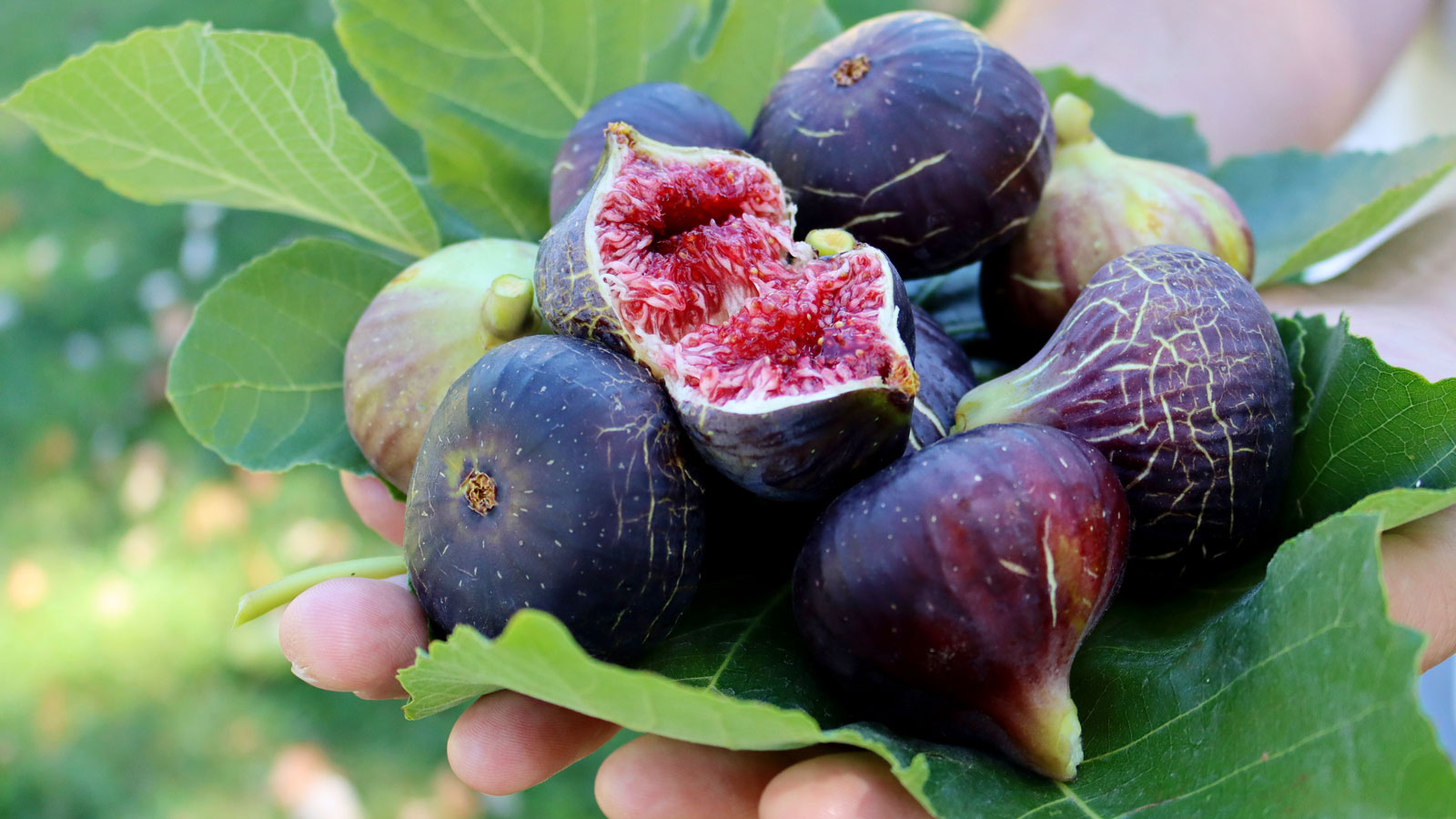How To Tell When Figs Are Ripe – Our Fruit Growing Expert Reveals 5 Secrets To The Ultimate Squidgy Fruits
Figs are a gorgeous Mediterranean delicacy but knowing when you can enjoy their squidgy goodness isn’t always clear. Here we explain 5 pointers on how to tell when figs are ripe


If you have the right climate for it, a fig tree is easy to grow. It will reward you with year after year of tasty fruits. But as a newcomer, how do you know if figs are ripe and ready to pick? This can be tricky at first, but once you get to know the tree and grow figs frequently, it will become easier to know how to tell when figs are ripe. Timing matters, because you can lose fruit by harvesting figs too early or too late. Still, there are a few key ways to identify the optimum time to enjoy these delectable fruits. Read on so you can maximize your crop and enjoy figs for longer.
How Do You Know When Figs Are Ripe?
The time it takes figs to ripen depends on the variety of fig tree. On average, figs ripen in about 90 days. Climate is also a factor – and so is the rate of feeding figs –. In determining if your fig is producing fruit. Fig trees ripen faster in warmer climates and weather. If you have cooler summers or a cold spell, your figs may take longer to produce fruit. Depending on your growing region and fig type, your tree might produce ripe fruit between July and October. Because there is so much variation, knowing how to tell if figs are ripe is essential. Over time, you’ll get to know your figs and when they’re ripe. Until then, use this list. The more signs of ripeness you see, the better.
1. Color Change
Different fig varieties come in different colors. Varieties like ‘White Marseilles’ and ‘Desert King’ from Nature Hills have white flesh and green skins when ripe, whereas others like ‘Black Mission’ from Burpee ripen to deep purple skins and red flesh, and ‘Fignomenal’ figs from Burpee produce brown skins and dark orange interiors. What most have in common is that they change color as they ripen.
Watch your tree’s figs for a color shift. If you know your variety, look up what color they should be when ripe, or if there is no real color change. Generally, figs that start out green will lighten as they ripen, while dark figs get darker, often changing to deep purple.
2. Fruit Softness
You can also learn how to know if figs are ripe by touch. Feel your figs to help determine if figs are dry inside or if they are exhibiting ripeness. They should feel soft but not overly soft. The skin should give a little when you squeeze it, like a full water balloon. Your fingernail should easily pierce the skin of a ripe fig. The skin is edible, so when ripe it should be soft.
3. Fruit Drooping
This is key when learning how to know when figs are ripe. One of the most characteristic signs of a ripe fig is its position on the tree. Unripe figs stick out from a branch at a perpendicular angle. As they ripen, they begin to droop and ultimately hang below the branch. If you see drooping in this corner of your backyard mini orchard, it’s a great indication of burgeoning flesh and flavor, and a literal tipping point in terms of harvesting.
4. Skin Splitting
Many fig varieties show skin splitting or cracking as they ripen, particularly the darker skin varieties such as ‘Brown Turkey’ and ‘LSU Purple’ from Burpee. It begins after the fig begins to droop and soften. As the fig ripens, it expands inside the skin, leading to cracks or splits that might even leak juice.
5. Eye Weeping
One final and very characteristic sign of a ripe fig is weeping from the eye, the small opening on the bottom of the fruit opposite the stem. If you gently squeeze the fig, a little juice or syrup will come out of the hole.Some key varieties that are known to weep include ‘Adriatic’ and ‘Celeste’ from Nature Hills.
Sign up for the Gardening Know How newsletter today and receive a free copy of our e-book "How to Grow Delicious Tomatoes".
Should You Leave Figs Longer?
If you don’t see these telltale signs of ripeness, it’s best to leave the figs on the tree a little longer. Perhaps the most important final sign is the drooping. The color might look right. It might feel a little soft, but if the fruit isn’t drooping, it’s not ready yet.
Figs will not ripen off the tree if you harvest them when they are totally unripe. However, if some figs are clearly ripening but haven’t fully drooped yet, go ahead and pick them. They’ll ripen left on the kitchen counter for a few days.
When are figs ripe versus too ripe to pick? It’s best not to wait too long to pick ripe figs, as they will drop to the ground soon. Animals will eat ripe figs off the tree or on the ground.
Can You Speed Up Fig Ripening?
Determining how to know when figs are ripe, you might wonder if you can speed things up a little. If you’re planning ahead, you can speed fig ripening by pinching back branch tips in spring. This reduces the number of figs that will develop and ensures more or all of them will ripen on time. After that, fertilizing and watering figs are the two key ways to boost a plant’s nutrient levels.
Figs, like certain other fruits, ripen in the presence of a chemical called ethylene, which they make themselves. You can prevent ethylene from escaping a ripening fig by rubbing some olive oil on the eye. This may help it to ripen faster.
If any unripe figs fall off the tree, put them in a paper bag with a banana for a few days. The banana gives off a lot of ethylene and will help ripen them.
Frequently Asked Questions
Is it Ok For You to Eat Unripened Figs?
It’s not a good idea to eat unripe figs raw, but you can enjoy them when prepared correctly. Unripe figs can be cooked in several ways and eaten. You can also cook them in a sugar syrup and preserve them in jars for long-term storage.
How Do You Know if Figs Are Over-Ripe?
Overripe figs are very soft and mushy. They ooze juice and may even be starting to ferment and give off an unpleasant smell.

Mary Ellen Ellis has been gardening for over 20 years. With degrees in Chemistry and Biology, Mary Ellen's specialties are flowers, native plants, and herbs.